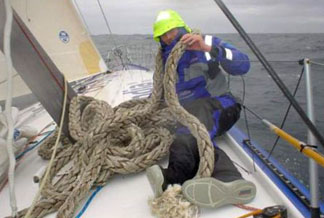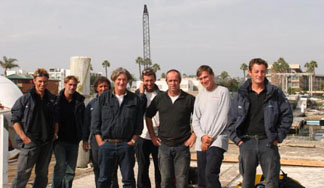 |
Golden Day for Golden Gate MidwintersNovember 7 - San Francisco  You couldn't ask for a nicer day to kick off midwinter racing on the Bay than that enjoyed by the Golden Gate YC fleet on Saturday. Seventy-seven boats in nine divisions enjoyed sparkling sunshine and medium breeze - with a few parking lots thrown in for good measure (such as the one at the Blossom Rock buoy in the photo above) - to complete the first midwinter race of the season. 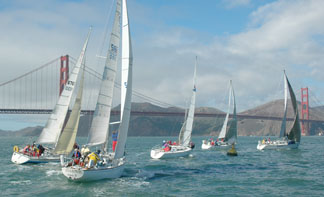 Razzberries leads the PHRF 3 division around the windward mark (Blackaller buoy). The Cal 40 Shaman, seen here at the back of this cluster, went on to place first in the division. Joining in on more serious fun, the Melges 24 fleet used Saturday's race (and another on Sunday) as a tuneup for their upcoming Worlds in Key Largo December 11-16. Lending a bit of star power to the proceedings, Russell Coutts was calling tactics on Philippe Kahn's Pegasus 575, while Philippe's son, Shark - who won the 2003 Worlds - was hot on Dad's heels most of the day. 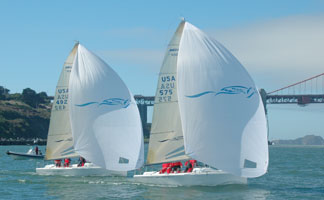 No quarter - Shark Kahn (492) chases dad Philippe and Russell Coutts (575) in Pegasus Racing's Melges 24s. Division winners (not including the Melges fleet) follow. Complete results should be available soon at www.ggyc.com. For complete coverage, check out the December issue of Latitude 38. PHRF 1 (<48): Mr. Magoo, J/120, Stephen Madeira; PHRF 2 (49-78): Q, Schumacher 40, Glenn Isaacson; PHRF 3 (79-114): Shaman, Cal 40, Steve Waterloo; PHRF 4 (115-155): Harp, Catalina 38, Mike Mannix; PHRF 5 (> 156): Mr. Toad, J/24, John Hunt; IOD: Xarifa, Paul Manning; CATALINA 34: Wind Dragon, Dave Davis; FOLKBOAT: Frihed, Bill Madison. 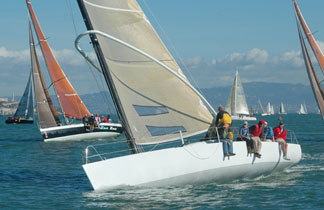 The new Wyliecat 44, sailing in PHRF 1, was showing her heels to most of the fleet. Photos Latitude/JR |





